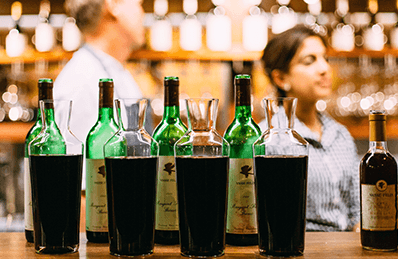14 March 2024 |
Vasse Felix
Decanting Cabernet, Tips by Estate Sommelier Evan

It's always exciting to enjoy a wine that's been in your cellar for years. You've been patiently waiting to drink this special bottle and you want to be sure it's in the best possible condition when you serve it. Estate Sommelier, Evan Gill, takes us through the process of decanting and its importance for both young and old wines.
~
Young, structured and powerful Cabernet Sauvignon, even the most poised, balanced and elegant Margaret River wines, can benefit from decanting in their young age. Through the introduction of oxygen, decanting can help bring to life complex components that have been 'trapped' in the bottle. Allowing oxygen into a young Margaret River Cabernet is like sunlight to a young vine in spring, it helps to open up the beautiful flavour compounds and structural elements of the wine.
Aged wines, 10 years and older, tend to accumulate sediment over time when cellared. Whilst it's an important piece of a good aged Cabernet, it's best to decant these wines before serving to remove the sediment.
Evan's Decanting Tips
1. Stand the bottle upright before decanting so the sediment may fall to the bottom.
2. Pour the wine steadily into your decanter, fast enough to allow a steady stream without causing excessive bubbling of the wine. Stop pouring when the sediment reaches the neck of the bottle.
3. Allow the wine to breathe in the decanter, this can mean anything from a couple of minutes to perhaps one hour. Discretion is advised with older wines (20 years or so) so as to not aerate the wine too much.
4. Taste the wine and watch it come to life!



